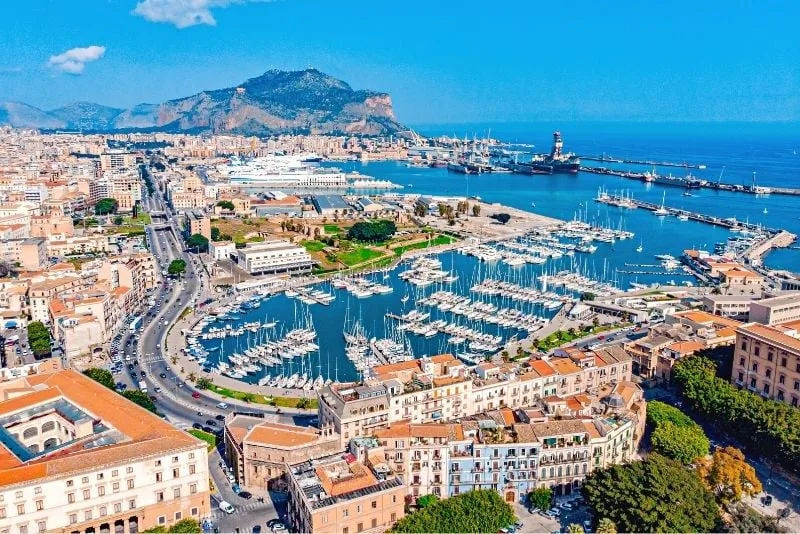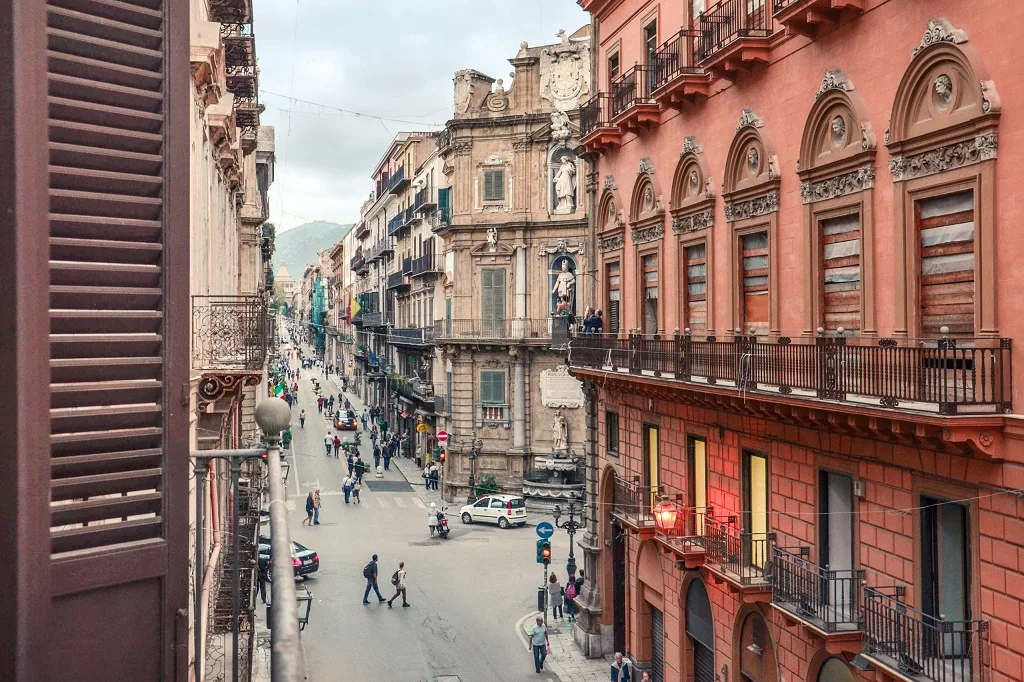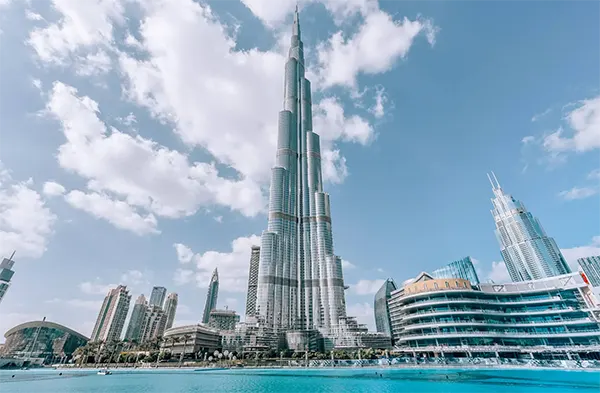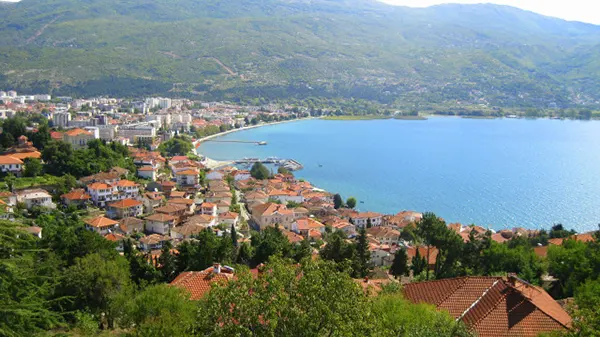
Palermo: Why You Should Visit This City
Palermo, the capital of the Italian island of Sicily, is a city that captivates with its rich history, diverse culture, and stunning architecture. Founded in 734 BC by the Phoenicians, Palermo has witnessed the rise and fall of many civilizations, each leaving its unique mark on the city. Located on the northwest coast of Sicily, it serves as a cultural and economic hub in the region. The city’s strategic position in the Mediterranean made it a significant center for trade and commerce throughout its history. This geographic advantage facilitated the growth of Palermo into a bustling metropolis with a melting pot of cultural influences.
Palermo’s location on the Tyrrhenian Sea offers visitors breathtaking views and easy access to the surrounding natural beauty of Sicily. The city is characterized by its beautiful coastline, rolling hills, and proximity to the Madonie Mountains. This unique setting not only provides a stunning backdrop for the city’s historic architecture but also offers numerous opportunities for outdoor activities and exploration. Whether you are wandering through its ancient streets or venturing into the nearby countryside, Palermo presents a captivating blend of urban and natural attractions.
Historical Significance of Palermo
One of the defining features of Palermo is its historical significance. The city has been under the rule of various powers, including the Romans, Byzantines, Arabs, Normans, and Spaniards. Each of these periods has contributed to the city’s architectural and cultural heritage. The Palermo Cathedral, for example, showcases a mix of Norman, Moorish, Gothic, and Baroque styles, reflecting the city’s diverse past. Another notable site is the Palazzo dei Normanni, which was the seat of the Kings of Sicily and now houses the Sicilian Regional Assembly. The Norman Palace is also home to the Palatine Chapel, renowned for its stunning mosaics and exquisite craftsmanship.
Palermo’s history is also marked by its role as a cultural and intellectual center during the Arab and Norman periods. The city became a crossroads of different cultures and religions, fostering a rich environment of artistic and scientific achievements. The Zisa and Cuba palaces, with their distinctive Arab-Norman architecture, are remnants of this golden age. These influences have left a lasting legacy on the city’s culture, making Palermo a unique destination that offers a glimpse into the intricate tapestry of Mediterranean history.
The Vucciria Market Experience
The Vucciria Market is a must-visit for anyone wanting to experience the local culture and cuisine of Palermo. This bustling market, with its vibrant atmosphere and diverse offerings, has been a staple in Palermo for centuries. Here, you can find an array of fresh produce, seafood, meats, and traditional Sicilian street food such as arancini (rice balls) and panelle (chickpea fritters). The market is also a great place to shop for local crafts and souvenirs, making it a favorite among tourists and locals alike. The energy and vibrancy of the Vucciria Market encapsulate the spirit of Palermo, offering a sensory feast for visitors.
Unique Architectural Styles
When exploring Palermo, visitors will notice the city’s unique blend of architectural styles. The influence of different cultures is evident in the buildings, from the Arabic domes and arches to the Norman castles and Baroque churches. The Church of San Giovanni degli Eremiti, with its red Arabic domes, is a striking example of the Arab-Norman architecture that Palermo is known for. Another iconic structure is the Teatro Massimo, the largest opera house in Italy and a symbol of Palermo’s rich cultural life. The theatre’s neoclassical design and grandeur make it a focal point of the city’s artistic scene.
The Quattro Canti, also known as Piazza Vigliena, is another highlight of Palermo. This Baroque square, located at the intersection of two main streets, is adorned with statues representing the four seasons, the four Spanish kings of Sicily, and the patron saints of Palermo’s four quarters. The square is a perfect example of Palermo’s Baroque urban planning and serves as a gateway to exploring the nearby historic quarters. Walking through the streets of Palermo, one can discover hidden gems such as the Oratory of San Lorenzo, famous for its stucco decorations by Giacomo Serpotta.
The city’s architectural diversity extends to its residential buildings, which often feature ornate balconies and courtyards. These elements add to the charm of Palermo’s historic neighborhoods, inviting visitors to explore and discover the unique stories behind each facade. The fusion of different architectural styles in Palermo is a testament to its rich history and cultural evolution.

Exploring Palermo’s Cultural Heritage
Palermo’s historical heritage is not limited to its architecture. The city is home to numerous museums and galleries that showcase its rich history and cultural diversity. The Regional Archaeological Museum Antonio Salinas houses an extensive collection of artifacts from Sicily’s ancient past, including Greek, Roman, and Phoenician relics. The Gallery of Modern Art (GAM) features works by Italian and international artists, providing a comprehensive view of Palermo’s artistic evolution. Additionally, the city’s vibrant festivals and events, such as the Feast of Santa Rosalia, offer visitors a glimpse into the local traditions and communal spirit of Palermo.
One of the highlights of Palermo’s cultural scene is its music and theatre. The city boasts a long tradition of opera and classical music, with the Teatro Massimo being a central venue for performances. Palermo also has a thriving contemporary music and arts scene, with numerous events and festivals throughout the year that attract artists and audiences from around the world. This blend of historical and modern influences makes Palermo a dynamic and ever-evolving cultural hub.
The local cuisine is another vital aspect of Palermo’s cultural heritage. Sicilian food is renowned for its bold flavors and diverse influences, reflecting the island’s history as a crossroads of Mediterranean cultures. From traditional dishes like pasta alla Norma and caponata to the city’s famous street food, Palermo offers a culinary experience that is both rich and varied. Dining in Palermo provides a taste of the island’s past and present, with each dish telling a story of the city’s multicultural heritage.
Popular articles
-
Burj Khalifa (Dubai): the world’...
The Burj Khalifa is more than …

-
Outer Islands Seychelles: The Un...
The northern segment of the Outer …

-
Ohrid, North Macedonia — A Timel...
Ohrid is one of the oldest …

